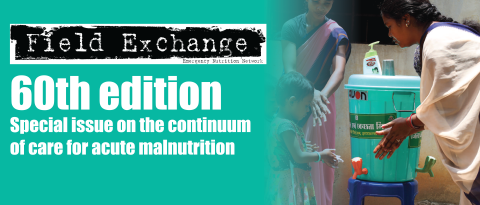Programmatic approaches for nutritional care in India: Perspectives on continuum of care
Research snapshot1
Continuum of care (CoC) from pregnancy to early life is central to planning and designing public health interventions to address undernutrition through strategic, systematic and consistent nutrition-specific and nutrition-sensitive interventions. However, while practitioners and planners believe in CoC, it is understood differently by different disciplines. The core element of CoC is the emphasis on individual care experiences received over time and maintained through a care plan through which patients receive seamless care across transitions to different settings. These are linked to preventative and curative services that strengthen patients’ positive health behaviour, self-care, needs identification and timely care-seeking. CoC involves health providers, the health system and the community, and demands integration, coordination and collaboration across different levels and multiple services.
Three prime drivers of CoC are: informational continuity (availability and use of information across providers and services); relational continuity (sustained contact between client and a consistent provider across time); and management continuity (so that no services are missed, duplicated or delayed). These drivers operate through the core elements of people, an enabling environment (shaped by political commitment and a strong health system), and time (care received over time at all stages of life, based on the life-cycle approach). Care should extend from home to hospital and back again with appropriate referral and case management, with the community health caregiver as the critical link across the different care settings.
In India CoC in the management of undernutrition is currently weak. Nutrition care pivots around clinical management of complicated severe acute malnutrition (SAM) through nutrition rehabilitation centres (NRCs); whereas undernutrition in India is a much broader problem, with SAM and severe chronic malnutrition (SCM) commonly co-existing in the same children. The existing public health service offers ample scope for the prevention, treatment and rehabilitation of undernourished children through integrated child development services (ICDS), sub-centres (SC), primary health centres (PHC) and NRCs. Current guidelines specify that complicated SAM cases are to be treated as inpatients in NRCs and uncomplicated SAM and moderate acute malnutrition (MAM) cases are to be managed in the community; however, there is no mention of which entity is responsible for the latter. ICDSs are an obvious choice, but are limited in their scope and poorly equipped to manage cases of discharged SAM, uncomplicated SAM, MAM and SCM. Furthermore, SAM management through NRCs has poor care outcomes, with low cure rates, high default rates, high numbers of non-responders and high secondary failure. This confirms weak CoC connecting nutrition care within and across different levels from community to facility and back to community. Implementation of integrated nutrition care will need to incorporate CoC elements at each level to make the big leap in addressing ongoing challenges.
Endnote
1Dasgupta R and Chaand I. (2018) Programmatic Approaches for Nutritional Care in India: Addressing the Continuum of Care Perspectives. Indian paediatrics, volume 55, August 15 2018.


